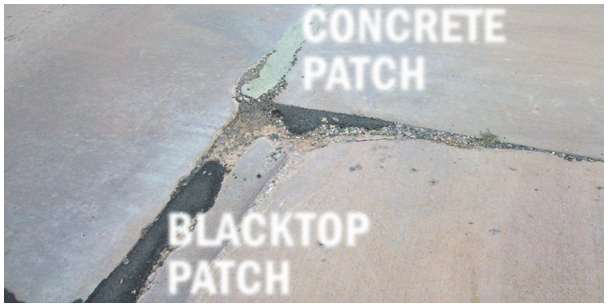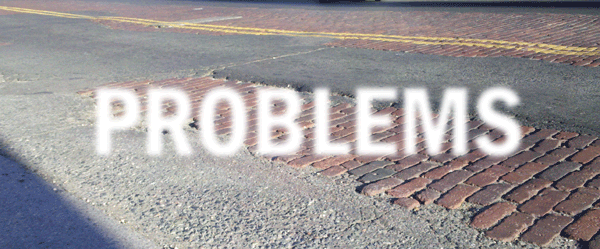Content, like roads, must be maintained. This maintenance must have a solid plan behind it, lest it become a haphazard series of patches and potholes.
I happened upon a quote by the travel writer Dame Freya Stark last week:
The most ominous of fallacies–the belief that things can be kept static by inaction.
This quote, plus my bumpy commute to work each day, got me thinking about the maintenance of both roads and content. Inaction in either case will bring a world of hurt to the people using them.
Maintain those roads
To the chagrin of the Department of Transportation, paved roads do not last forever.
Roads buckle and get potholes. They crumble. And they slowly become treacherous without intervention. Therefore, the DOT has a responsibility to craft a maintenance plan to ensure the road remains safe and passable.
Sometimes roads are maintained very well–problems are addressed before they become catastrophic. Ideally, the pavement problems are systematically fixed in a manner well-suited to the roadway design.
A smooth and even surface will get people where they need to go with ease. I always comment to my wife when we are lucky enough to travel on a smooth road. Like a big dork, I’ll say, “Boy, this sure is a nice piece of road.”
We’ve all seen (and felt) roadway repair problems:
- DOT lets the problem go for too long, requiring a larger fix
- Potholes get way over-filled, making the repair as bad as a pothole
- Cracks and potholes quickly become a worsening downward spiral
- Roads get destroyed by floods and earthquakes
- Small problems can cause unforeseen effects on larger systems, like bridges and on-ramps
Sometimes the solution is obviously an afterthought. This is clearly the case in my neighborhood. The red-hued concrete road was patched first with uncolored concrete (looks funny).
Later, the road crew patched it with blacktop (looks funny, too). Blacktop behaves differently in this region’s climate, and will be a bad long-term fix on the concrete roadway.
As you can see in this image, neither of the repairs are doing a good job:

Content must be maintained
Without regular maintenance, your content may become like jarring ride on a pothole-ridden avenue.
Think of that roadway as your content. Think of those filled potholes as fixes put in place along the way:
- Changes in company structure were shoehorned into the site’s IA
- A CEO insisted upon placing a stiff mission statement front and center
- A CMS update rendered your brittle customization unusable, so more custom work was cobbled on
- Stopgap fixes that were intended as temporary have become permanent
- Messaging that touts compatibility with both Netscape and Y2K
These things can all distract from the user experience, your intended messaging, and ultimately your core strategy and business goals.
Not every road or website can be pulverized and created fresh to address problems along the way. It’s too expensive. It’s not good roadway (or content governance) practice.
So, what to do?
Your content strategy must include governance
Governance is critical to keeping your content useful and usable. It is the part of your content strategy that allows for your content’s continuing maintenance, adaptation and evolution. It operates under the influence of your core strategy–what you are trying to accomplish, and why.
Like those roadways, content will not remain static if left inactive (as Dame Stark’s quote above indicates). Outside issues like web standards will affect content. Changes in your industry will affect content. Content will also begin to deteriorate on its own via the old enemy: ROT – redundancy, outdated-ness, and triviality.
So, we must address the problems as they arise. You can anticipate some of the issues, based on past experience. For the rest:
- Strive for the most complete content metadata possible
- Recognize the signs of potholes developing via regular content audits
- Make sure that your workflows aren’t exacerbating the issues
- Be aware that fixes themselves may have unintended consequences
- Revisit your core strategy often
Then, perhaps people will comment aloud when using your site by saying, “Boy, this sure is a smooth piece of content.” MAYBE.
